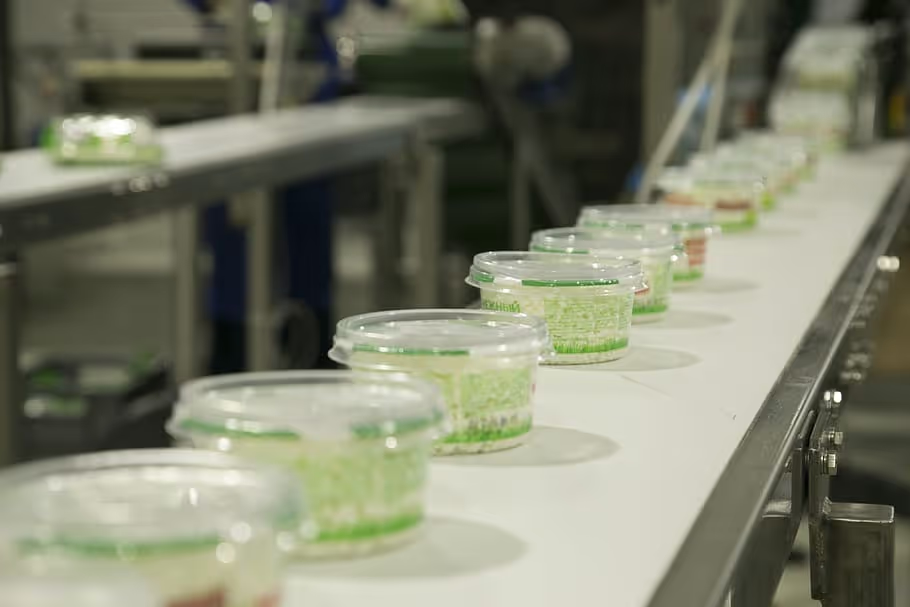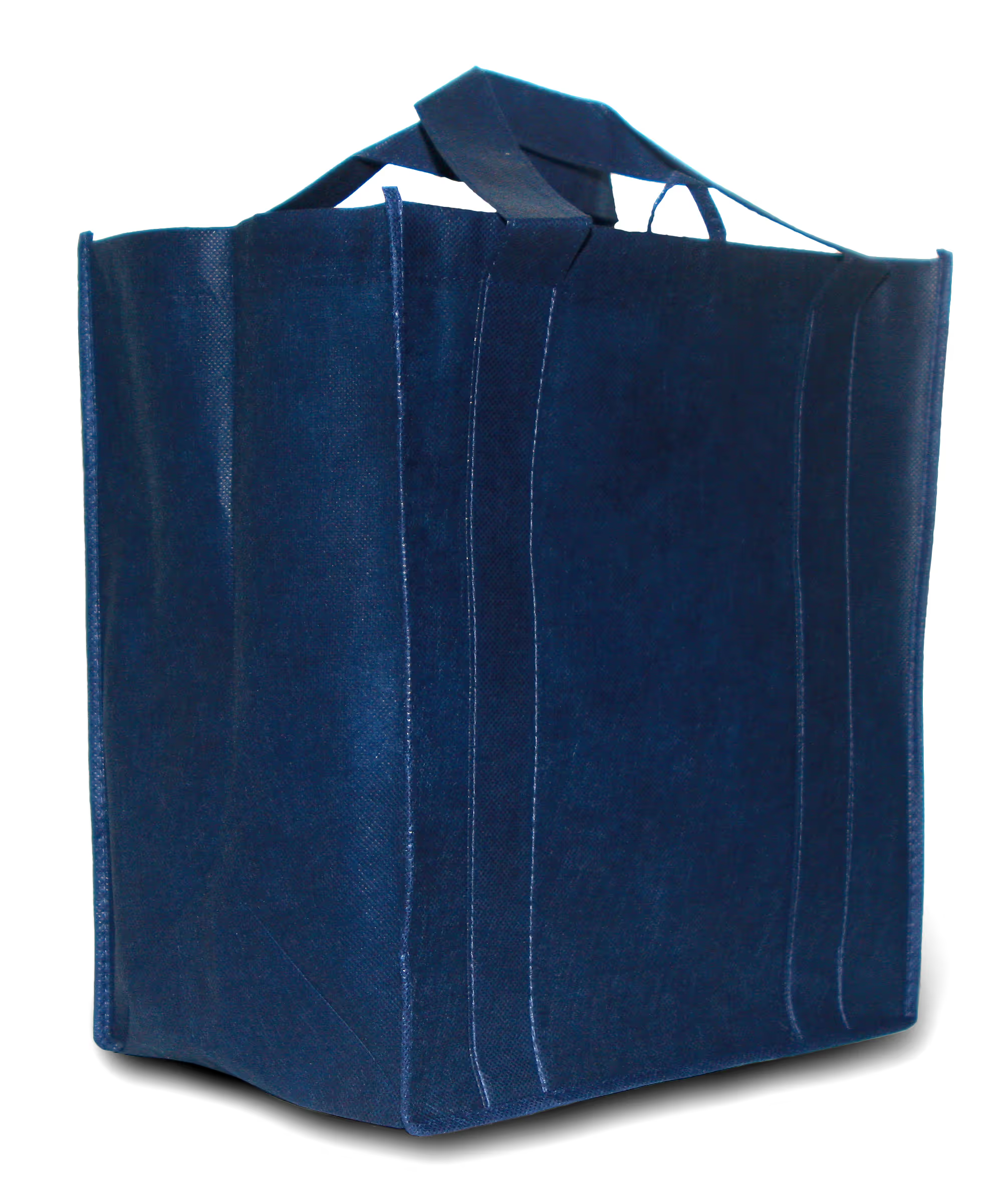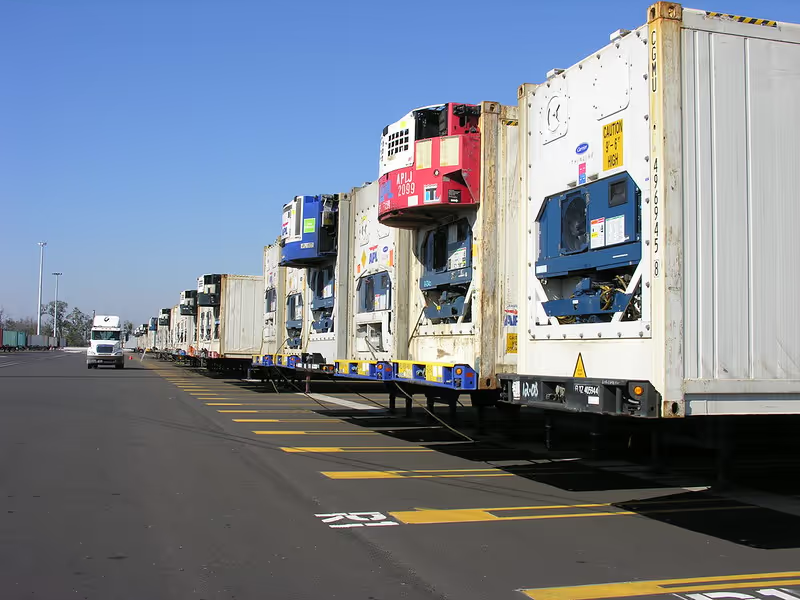5 Challenges of the Food & Beverage Industry in 2020: How a Yard Management System (YMS) Can Help
In the United States alone, the food and beverage industry is expected to see an annual growth rate of 3.1% between 2020-2024 resulting in a market volume of $8,546 million by 2024. It’s no secret the food and beverage industry is growing, however new challenges in 2020 are causing companies to reinvest in better supply chain processes and possibly look at new supplier relationships.

How Yard Management Software Helps Food & Beverage Companies
Below are five major challenges facing food and beverage companies today and how a yard management system can help tighten a critical piece in your supply chain.
1. Plastic Ban
The consumption and improper disposal of plastic has become one of the largest concerns for the food and beverage industry over the last decade and state restaurant associations are working diligently to address the issues and take action. Areas of California, Chicago and Maryland were just a few who implemented a plastic ban fee research study and monitored the results. In Montgomery county, Maryland, a 5 cent fee was placed on single-use plastic bags and there was clear behavior changes with a reduction in single-use plastic bags by half. In 2012, San Jose, California imposed a full ban on single-use plastic bags and a 10 cent fee for paper bag. According to a city environment and transportation committee report, the litter surveys demonstrated a reduction in bag litter of approximately 89 percent in the storm drain system, 60 percent in the creeks and rivers, and 59 percent in city streets and neighborhoods, when compared to data collected from 2010 and/or 2011 (pre-ordinance) to data from 2012 (post-ordinance).”
It’s clear that either a full ban on plastic or a bag fee is helping create behavior changes with better outcomes for consumption and reduced waste by using reusable bags.

In addition to bags, expanded polystyrene (EPS) foam food service ware is also being monitored and addressed across numerous restaurants and companies are searching for ways to eliminate waste while still continuing to operate efficiently. For example, several quick service restaurants profits come primarily from the drive through. How can these companies adjust using foam containers and plastic? Utilizing a paper plate with foil over the top could potentially cut costs in half.
Consumers are making choices based on sustainability values and companies are taking action. This year, Starbucks CEO recently announced their goal to completely switch to recyclable and reusable packaging and invest in supply chain sustainability hoping to reduce landfill waste by 50% in the next decade. The reduction in single-use plastics is already taking effect across multiple states and cities with the most common being the reduction in plastic straws at restaurants that are only provided on request.
2. Product Traceability
Food labeling is continuing to become more and more complex as new allergies are developing and consumers are expecting to know where their food is coming from. What machines are being used and if traces of one food are leaching into others is a grave concern for those with common allergic disorders including gluten, soy, nuts and even corn which isn’t required to be labeled yet on the allergy label.
Advanced technologies are emerging to better help with supply chain analysis and food traceability like FoodLogiQ, a software dedicated to farm-to-fork traceability, giving customers a complete visibility to their products at the batch lot level, reducing and mitigating risks.
3. Inventory Management and Perishability
Ensuring food is stocked in stores in a timely manner after being transported in specific temperature controlled trailers is no easy task. Suppliers are trying to balance the perishability factor with consumer demand and balancing stock effectively often takes a software system to help manage the process to ensure nothing is going to waste, food gets onto the shelves quicker and that food safety regulations are being met to prevent and decrease any health-risk problems.
There are three techniques that help the food and beverage industry with inventory management:
- Batch and expiry tracking is extremely important for the food and beverage industry specifically. Batch and expiry tracking is the ability to track incomings and outgoings of stock by bath so you can sell the oldest stock first, often known as the First in First Out (FIFO) method. Perishable products including dairy and produce can spoil easily under improper storage and transportation conditions and in the vent of a spoilage, a solid recall process must be in place.
- Just in Time (JIT) inventory management, common among retailors, is a strategy that cuts cost and decreases waste and can be very beneficial in the food and beverage industry as long as a real-time inventory management system is in place.
- The ABC method is where the highest priority food items are put into category A and lowest in C so that products are divided in order to allocate resources to the highest value products and provide customers with what they are looking for.
4. Veganism and Health Consciousness
Growing trends of meat-free and veganism has drastically changed consumer food patterns with consumers choosing more vegan or vegetarian products and preferences of “cage-free” and “humane-certified” items. These trends have forced companies to reconsider how their products are produced or what suppliers they are using.
The “Vegatarianism in America” study by Vegetarian Times showed that 3.2 percent of U.S. adults or 7.3 million people followed a vegetarian diet and 10% of U.S. adults say they largely follow a vegetarian-inclined diet. A survey indicated that those who used a vegetarian or vegan diet did so for health reasons indicating medical practitioners are using this as a type of intervention to treat various conditions such as high blood pressure.
5. Transparency – Local Products
More than ever, consumers now want to know exactly where the products they are buying in grocery stores are actually coming from, if they are local and how it was produced – from the animal environment and food, to chemicals sprayed and additives used. Consumer knowledge about health has created operational headaches for companies to impose ingredient label changes moving from high processed, low cost ingredients such as high fructose corn syrup, aluminum cans (BPA worries) or soy lecithin (allergy) to more expensive “natural” ingredients or containers.
The Food and Drug Administration (FDA) only require the top 8 allergens to be listed on a food label including milk, egg, fish, shellfish, tree nuts, wheat, peanuts and soybeans. Other common allergens including corn or pea protein which falls in the peanut family are not listed on the label (yet) but can cause life threatening reactions. Some organizations such as FARE are working hard to produce artificial intelligence to stop food allergies at the source.
How a Yard Management System Gets Your Products to the Finish Line
It’s clear that food and beverage has some significant challenges that ultimately impact how they manage their supply chain. Regardless of what inventory management technique is being used to track the food and beverage inventory, products still need to get transported through warehouses or distribution centers, onto trailers and transported by truck to the store. That’s an entirely different group of software systems.
A yard management system (YMS) integrates with almost any system, big or small, and monitors the movement of trucks and trailers in the yard, how long it’s been there, where it’s supposed to be and when.
Below are a three ways YardView’s yard management system specifically caters to the food and beverage industry:
- Automated Inventory Alerts
When stock is low, a yard management system can trigger and request a trailer to the staging door. Knowing where inventory is located in the yard is crucial to meeting consumer demand or a just in time inventory management process. The best part, most yard management systems integrate with food and beverage inventory systems making it easy to automate alerts and triggers to schedule and load outbound trailers or monitor when the next one will arrive.
- Temperature Controlled Container Tracking
A refrigerated container also known as a “reefer” are temperature controlled trailers that can range from -65 degrees Celsius up to 40 degrees Celsius. Temperature data loggers or the use of barcodes and RFID tags are used to monitor the temperature history of the container being shipped and can help determine remaining shelf life. The container itself is not used to lower the temperature of food items but to maintain the pre-cooled temperature of items. With a “reefer”, food safety standards are monitored and a YMS can ensure it’s at the right temperature before it gets loaded at the dock.

- Every Transaction is Recorded
Documentation is critical for a seamless food and beverage supply chain. If a shipment does not meet the temp requirement through it’s journey or has varying patterns, it can be rejected at the destination. Being able to catch these critical points prevents spoilage and maintains efficiencies, ultimately lowering potential risks and the costs associated with them.
There isn’t time anymore for costly mistakes in your supply chain, contact us today to integrate your system with YardView.



